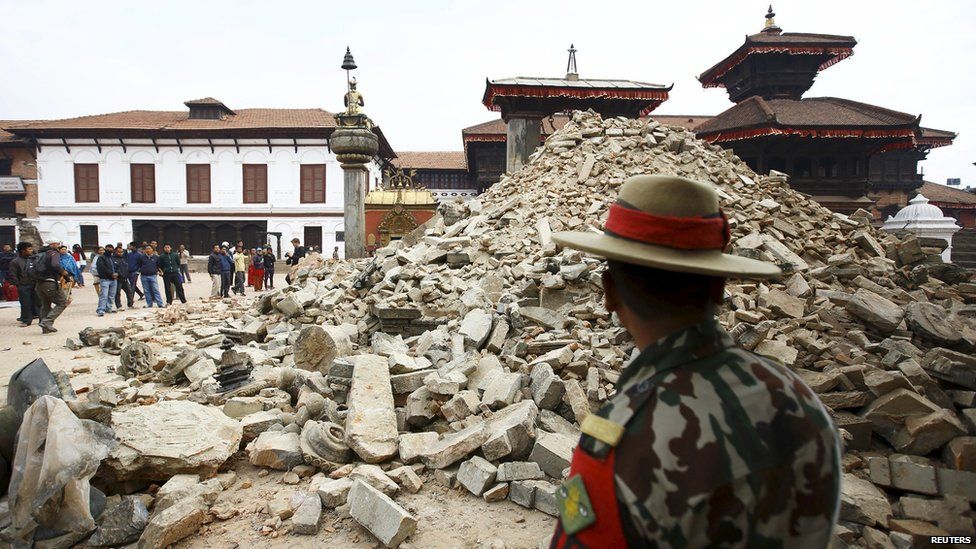Nepal's Kathmandu valley treasures: Before and after
- Published

As well as the devastating loss of human life in Saturday's earthquake, Nepalis, and the world, have lost parts of the country's unique cultural heritage.
Irina Bokova, the Director-General of the UN's cultural organisation, Unesco, said there had been "extensive and irreversible damage" at the world heritage site in the Kathmandu valley.
Seven monument zones in the valley make up the world heritage site.
The three urban zones at the site are Durbar squares - meaning "noble courts" - in the settlements of Kathmandu, Bhaktapur and Patan.
Ms Bokova describes these three complexes as "almost fully destroyed".
The four other zones are religious sites: Buddhist stupas [monuments] at Swayambhunath and Boudhanath and Hindu temple complexes at Pashupatinath and Changu Narayan.
Unesco said in a statement that it would be sending international experts to assess the damage to the sites in the Kathmandu valley.
Kathmandu's Durbar Square
The Durbar Square in Kathmandu's Old City is a mesh of palaces, courtyards and temples.
Unesco calls it "the social, religious and urban focal point" of the Nepalese capital.
Bhaktapur's Durbar Square
The main temple in Bhaktapur's square lost its roof, while the 16th Century Vatsala Durga temple, famous for its sandstone walls and gold-topped pagodas, was demolished by the quake.
Patan's Durbar Square
Patan, or Lalitpur, is across the Bagmati river to the east of Kathmandu.
The city was founded in the 3rd Century.
Swayambhunath temple complex
The Buddhist temple complex at Swayambhunath, founded in the 5th Century, has also been damaged.
Video footage showed the toppled facade of one of the buildings, with the prayer flags surrounding it still fluttering in the wind.
But the iconic central stupa, with its gazing eyes of the Buddha, still stands.
Boudhanath temple complex
There are reports that the Boudhanath stupa has sustained some damage, though details are not yet clear.
It is the largest stupa in Nepal.
Pashupatinath Hindu religious complex
The shrine at the Pashupatinath Hindu religious complex has not been damaged in the disaster, a devotee at the temple told the Indian Express.
Cremations are being held on the site continuously, the paper reports.
Dharahara tower
This landmark has been reduced to a stump by Saturday's quake.
Built by Nepal's first prime minister in 1832, the site, also known as the Bhimsen Tower, was popular among tourists who would climb up more than 200 steps to view Kathmandu from the top.
It is unclear whether all of these ancient monuments can, or will, be rebuilt.
Historian Prushottam Lochan Shrestha told the ekantipur.com website: "We have lost most of the monuments that had been designated as World Heritage Sites in Kathmandu, Bhaktapur and Lalitpur [Patan].
"They cannot be restored to their original states."
And yet many buildings that were destroyed in Nepal's 1934 earthquake were reconstructed, including the Dharahara tower.